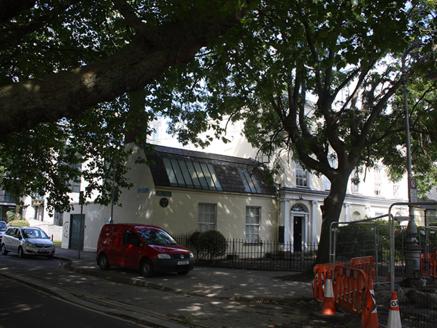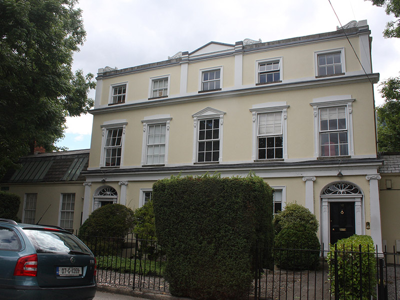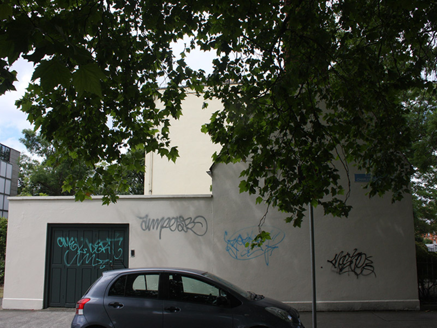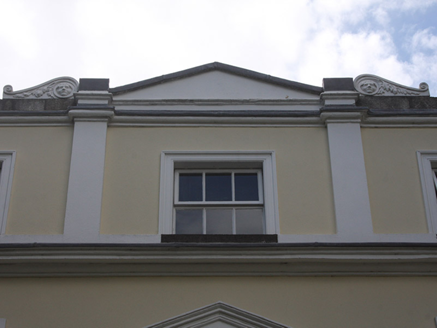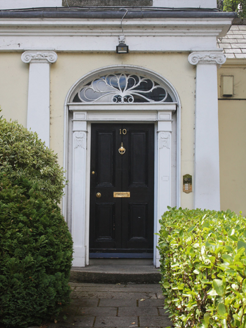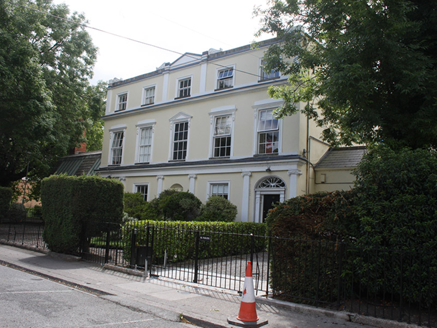Survey Data
Reg No
50110471
Rating
Regional
Categories of Special Interest
Architectural, Artistic, Historical
Original Use
House
In Use As
Apartment/flat (converted)
Date
1825 - 1835
Coordinates
316115, 232618
Date Recorded
23/07/2017
Date Updated
--/--/--
Description
Attached two-bay and three-bay three-storey former houses over basements, built 1830, as pair. Now in use as apartments. Single-storey bays to side(north and south) elevation. Rear return to side bay to south. M-profile hipped slate roof to house concealed by rendered parapet having granite coping with stucco scrolls having anthropomorphic and foliate decoration, render pediment to centre bay. Rendered chimneystacks with clay pots. Hipped slate roof to side bays, that to south having red brick chimneystack. Rendered walls. Commemorative plaque to wall to south bay. Render pilasters to second floor, moulded masonry cornices. Ionic pilasters and entablature to ground floor, stone plinth course over basement. Round-headed niche with stone sill to ground floor. Square-headed window openings having moulded render surrounds, those to first floor with pediments and cornices over scrolled consoles, those to ground floor having stone sills. Continuous masonry sill course to first and second floor window openings. Round-headed window opening to rear. Replacement windows throughout. Elliptical-headed door openings with moulded render surrounds, doorcases comprising panelled pilasters having foliate decoration supporting panelled cornices. Leaded fanlights. Timber panelled doors and granite steps. Square-headed door opening to return. Wrought-iron gates and matching railings set on granite plinth wall fronting site.
Appraisal
This house is part of Harcourt Terrace, acknowledged as Ireland's finest surviving group of Regency houses. The ornamental stucco frontage exudes an air of grandeur. The central pediment and niche, with a symmetrical fenestration arrangement, create a pleasingly balanced facade. Formerly overlooking a large wedge-shaped green, the houses were built as a speculative venture by Charles Jaspar Joly, the son of Jean Jaspar Joly (d.1823) who came to Ireland from France as private secretary of Lord William Fitzgerald and acquired land in the environs of what became Harcourt Terrace. Thomas Lyster (d.1920), scholar and director of the National Library, as well as a character in James Joyce's Ulysses, lived at No. 10. The artist Sarah Purser had a studio in the south side wing of No. 11.
